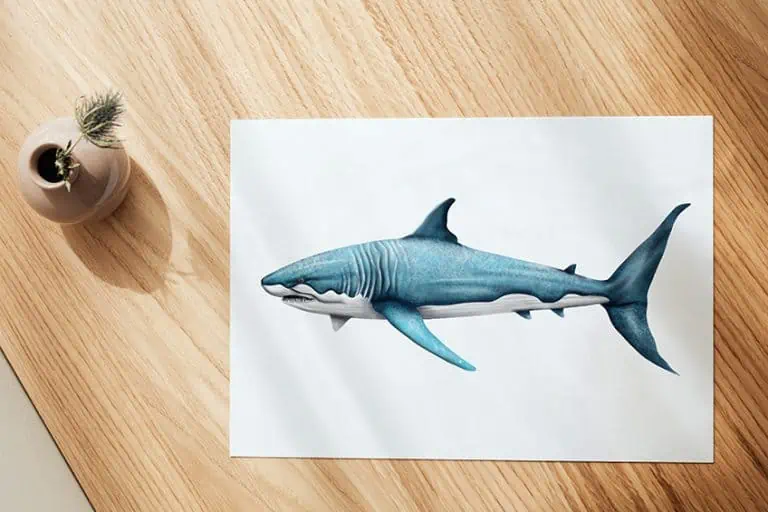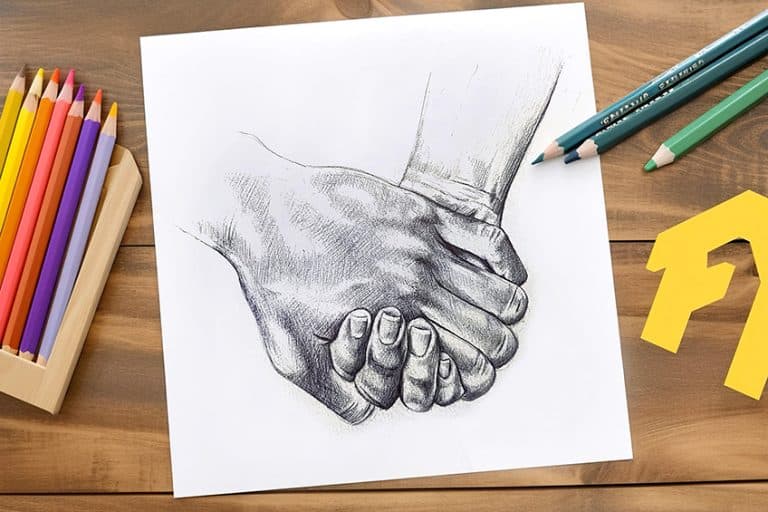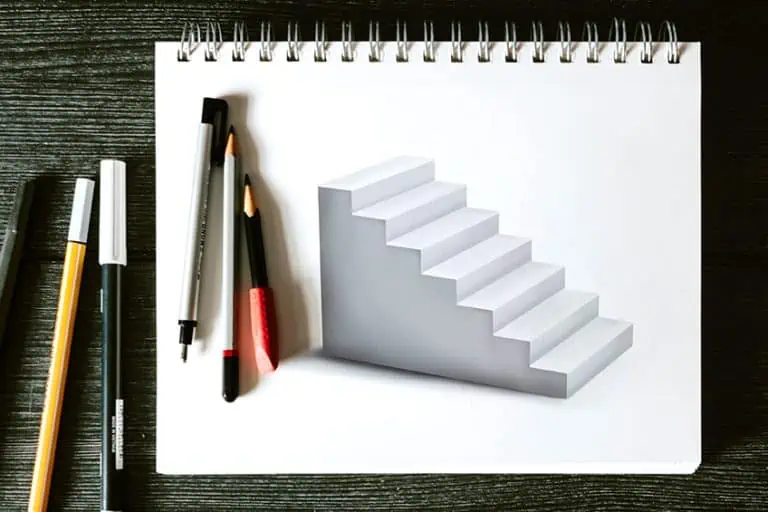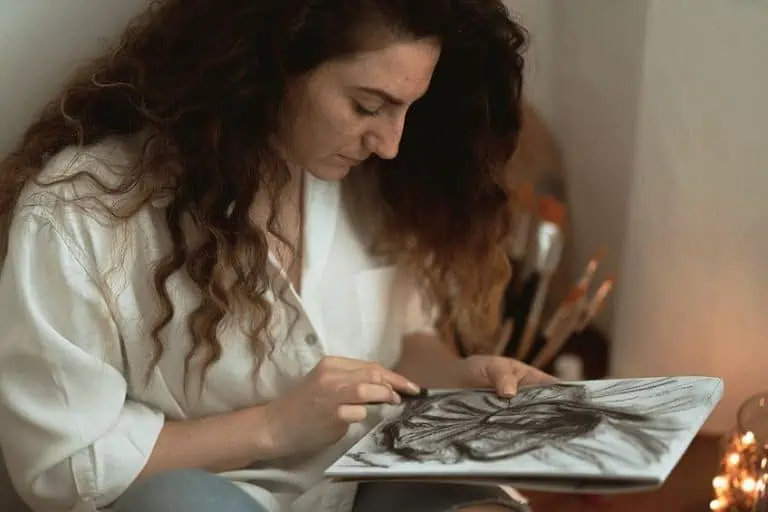Types of Pencils – What You Need to Know About Pencil Types
This post may contain affiliate links. We may earn a small commission from purchases made through them, at no additional cost to you.
Pencils are possibly the most commonly used art medium, and many people are familiar with pencils from a very young age. They can be found in an artist’s workspace, a child’s playroom, or an architect’s study. Pencils are versatile, accessible, and convenient options for all kinds of creative people looking to draw or sketch. This article talks about drawing and sketching pencils types, as well as the types of pencil lead available in different pencils on the market. We also answer questions such as, “what’s in a pencil?” and “what does HB mean on a pencil?”, so if you are trying to learn everything you need to know about pencils, then this is the article you’ve been looking for!
Table of Contents
What’s in a Pencil?
Most people have been using pencils as far back as they can remember, but you might not know what’s in a pencil. A pencil is typically made up of just the pencil lead, the printing, and the casing however there may be additional components such as an eraser, a cap, or a ferrule. This section of the article will briefly explain the parts that make up a pencil.
The pencil lead is the core of the pencil and is made from a mixture of clay and graphite, charcoal, or colored pigments.
Pencil lead is encased in a wooden casing, which provides the pencil with its shape and structure. The casing is typically a thin layer of cedar, basswood, or other lightweight wood. There may be print on the pencil, such as the brand name, model number, and the HB grading scale, which indicates the hardness or softness of the pencil’s lead. If you are wondering “what does HB mean on a pencil?”, we go into more detail about HB grades in the next part of this article.

Many pencils come with an eraser attached to the end, which is made from rubber or a similar material. The eraser is used to remove mistakes or stray marks made with the pencil. The eraser is held in place by a small metal ring called a ferrule, which is typically made from aluminum or another type of malleable metal. Some pencils even come with a cap that fits over the eraser to protect it and keep it clean. This cap is typically made from plastic or another type of lightweight material.
What Does HB Mean on a Pencil?
HB is a grading scale used to indicate the hardness or softness of the lead inside a pencil. The letters “H” and “B” stand for “hard” and “black,” respectively. The scale ranges from the hardest and lightest (9H) to the softest and darkest (9B). The HB grading scale is a standardized system that is used to categorize pencils around the world. The HB grading is often printed on the pencil itself, along with the pencil’s brand name and model number.
Pencils with a higher “H” rating have a harder lead, which makes them lighter in color and more resistant to smudging.
These pencils are often used for detailed, precise work, such as drafting or technical drawing. On the other hand, pencils with a lower “B” rating have a softer lead, which makes them darker in color and more prone to smudging. These pencils are often used for artistic purposes, such as drawing and sketching, because of the rich, bold lines that they create.
It is not possible to assign a specific hex code to each grade on the HB pencil grading scale, as hex codes are used to represent colors in digital media, and the grades on the HB scale do not correspond directly to specific colors. If you are looking to represent the shades of different grades on the HB scale using hex codes, you would need to choose a color that is approximately equivalent to the darkness or lightness of each grade. For example, you could use a very light color, such as #F2F2F2 to represent a 9H pencil, and a very dark color, such as #000000 (black), to represent a 9B pencil. However, this would not be an exact representation of the shades of the grades on the HB scale, as hex codes do not correspond directly to the grades.

If you are looking to choose a color that is approximately equivalent to the darkness or lightness of each grade on the HB pencil grading scale, you can use the following technical table as a guide. This table also shows the HB grading scale for pencils from hardest to softest so that you can visualize the differences better.
| HB Grading Scale | Description | Hex Code | Shade |
| 9H | ● The hardest and lightest grade | #F2F2F2 | |
| 8H | ● A hard grade ● Slightly darker and softer than 9H pencils | #EBEBEB | |
| 7H | ● A hard grade ● Slightly darker and softer than 8H pencils | #E1E2E3 | |
| 6H | ● A hard grade ● Slightly darker and softer than 7H pencils | #D1D1D1 | |
| 5H | ● A hard grade ● Slightly darker and softer than 6H pencils | #C2C2C2 | |
| 4H | ● A medium-hard grade ● Slightly darker and softer than 5H pencils | #B3B3B3 | |
| 3H | ● A medium-hard grade ● Slightly darker and softer than 4H pencils | #9FA0A1 | |
| 2H | ● A medium-hard grade ● Slightly darker and softer than 3H pencils | #8D8E8F | |
| H | ● A medium-hard grade ● Slightly darker and softer than 2H pencils | #8A8A8A | |
| F | ● A medium grade ● Slightly darker and softer than H pencils | #868585 | |
| HB | ● A medium grade ● Slightly darker and softer than F pencils | #858585 | |
| B | ● A medium-soft grade ● Slightly darker and softer than HB pencils | #838584 | |
| 2B | ● A medium-soft grade ● Slightly darker and softer than B pencils | #747574 | |
| 3B | ● A medium-soft grade ● Slightly darker and softer than 2B pencils | #696969 | |
| 4B | ● A medium-soft grade ● Slightly darker and softer than 3B pencils | #666666 | |
| 5B | ● A soft grade ● Slightly darker and softer than 4B pencils | #575757 | |
| 6B | ● A soft grade ● Slightly darker and softer than 5B pencils | #454545 | |
| 7B | ● A soft grade ● Slightly darker and softer than 5B pencils | #323333 | |
| 8B | ● A soft grade ● Slightly darker and softer than 5B pencils | #212121 | |
| 9B | ● The softest and darkest grade | #0F0F0F |
What Different Types of Pencils Are There?
We have already discussed just how commonplace pencils are in our lives, but how can they be so widespread when the needs of each person are different? The reason for this is that there are different pencil types available to suit different needs. This part of the article discusses the different types of drawing pencils available for artists and creatives.
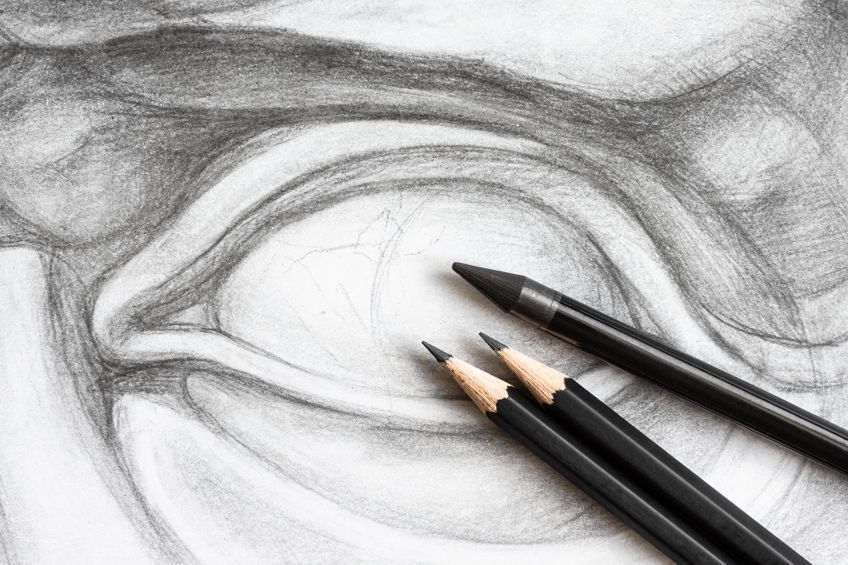
Carbon Pencils
When a pencil has a combination of both charcoal and graphite it is known as a carbon pencil. Having a superior texture and consistent softness makes carbon pencils ideal for drawing. However, they leave dark and thick lines that are difficult to erase. These pencils are smoother than charcoal and produce deeper black than graphite pencils which makes them perfect for any artist that is looking for a middle ground between the two.
Charcoal pencils are graded using the HB scale, even though they will be many shades darker than regular graphite pencils of the same HB rating.
Graphite Pencils
The lead in graphite pencils is made with a gradated mix of clay and graphite. This is the most common type of pencil lead and comes in a variety of grades, ranging from 9H, which is the hardest and lightest, to 9B which is the softest and darkest. Graphite pencils provide versatility which artists use to draw realistic images, render expressive lines, or sketch guidelines.
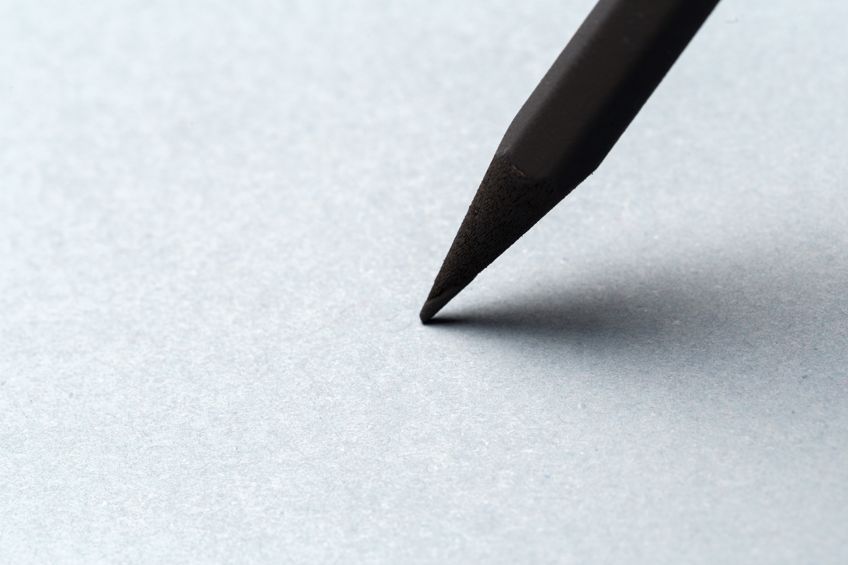
Charcoal Pencils
Charcoal pencils are made from compressed charcoal and are known for their ability to create dark, bold lines. The hardness of charcoal pencils typically ranges from around HB to 6B. Charcoal pencils allow for rich tones with high contrast and visual fidelity. This is why they are most often used for drawing and sketching. While charcoal pencils smear easily and are more brittle compared to other pencils, they are easy to erase or wipe off if a mistake is made. Unlike charcoal sticks, charcoal pencils prevent the user’s hand from being marked.
Many renowned artists, such as Michelangelo or Leonardo da Vinci, used charcoal pencils.
Watercolor Pencils
Watercolor or water-soluble pencils are a versatile art medium that is made with a water-soluble core, which can be activated with a brush and water to create a wash of color. Many artists enjoy using watercolor pencils for coloring and sketching. This is because they can be used to achieve a watercolor effect by applying some wetness, or they can be used just like regular pencils. If you want to create a watercolor effect, you must first lay down the dry pigment and then follow up with a damp paintbrush. Use the paintbrush to spread or blend the colors in a wet application.
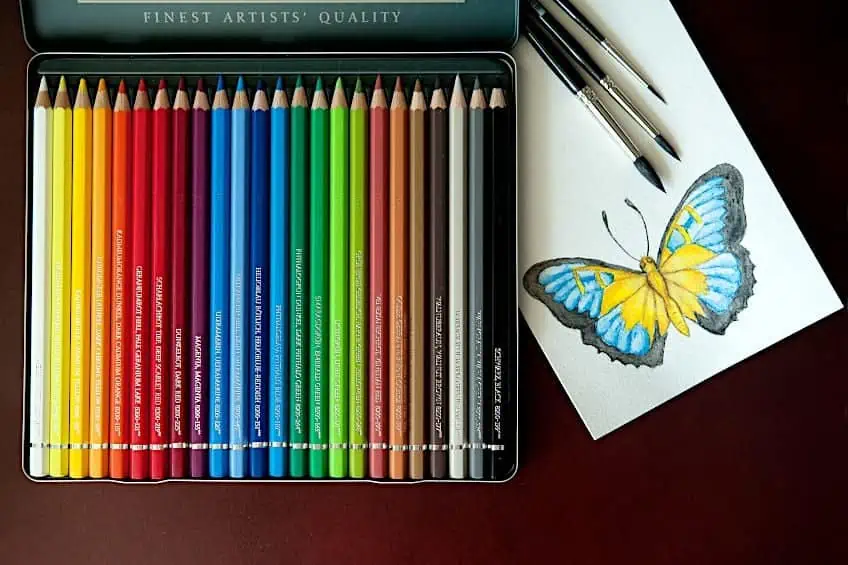
Colored Pencils
Unlike graphite and charcoal pencils, the lead of colored pencils is wax or oil based, while the base itself contains varying pigments, additives, or binding agents depending on the brand or manufacturer. They come in a wide range of colors and can be used to create detailed, colorful drawings and artworks. Colored pencils don’t tend to be HB-graded like other pencil types but instead will vary as being softer or harder depending on the brand you choose.
This can make looking for the right pack of colored pencils quite tricky for artists as it will take some trial and error to find the preferred hardness or softness.
What Are Pencils Used for in Art?
Pencils are a versatile tool that is widely used for drawing, sketching, and coloring. For example, sketching is the process of creating preliminary drawings, known as sketches. Pencils are tools for sketching as they tend to be easy to erase and allow for a range of lines and tones to be created. Pencils are also accessible, affordable, and easy to transport or store. Pencils can also be used to create detailed, realistic drawings, as well as more expressive, loose drawings. Different grades of pencils can be used to create a range of lines and tones, from very light to very dark which makes them suitable for creating pieces of art more intricate and finalized than sketches too!
The different pencil types available also allow for a wide range of different effects to be created by artists in their work.

Pencils can be used to create gradations of tone and add dimension to drawings by adding shadows and highlights. Different grades of pencils can be used to create different shades of gray, which can then be blended to create a range of tones in the artwork. Additionally, colored pencils can be used to add color to drawings, either as a standalone medium or in combination with other media such as paints, collages, or ink to create mixed media art.
Being relatively inexpensive, portable, and easy to use, pencils are a very popular choice for many artists worldwide. Their ability to create a wide range of effects, from detailed, precise drawings to expressive, loose sketches, makes them a staple for artists of all kinds.
Even artists who tend to work primarily with other mediums will have a few pencils on hand for tasks like planning or sketching.
How to Care for Pencils Correctly
Once you have found a type of pencil that you enjoy working with and that suits your artistic style, you must be sure to care for them correctly. Improperly caring for your pencils reduces their effectiveness and lifespan. Below we talk about how to take care of your pencils to ensure that they perform well and last a long time! By following the simple care tips below, you can help ensure that your pencils stay in good condition
- Store pencils properly. Avoid storing pencils in damp or humid conditions, as this can cause the wood to warp or the lead to break. It is also a good idea to store pencils in a pencil case or container to keep them organized and protected.
- Sharpen pencils carefully. When sharpening your pencils, do not use a blunt pencil and avoid over-sharpening, as this can cause the lead to break or the wood to splinter. If you are using a specialized pencil you should use a sharpener that is designed for the type of pencil you are using.

- Protect pencils from damage. Avoid dropping or throwing pencils, as this can cause the lead to break or the wood to become damaged. It is also a good idea to avoid pressing too hard when using a pencil, as this can cause the lead to break or the wood to become indented.
- Clean pencils gently. If you need to clean a pencil, use a soft cloth or a pencil eraser to gently remove any dirt or debris. Avoid using harsh chemicals or abrasive materials to clean your pencils, as these will cause damage.
Famous Artists Who Worked With Pencils
Many famous artworks have been created with the use of pencils as pencils are used to plan and sketch paintings. Pencils are a versatile tool that can be used to create a wide range of effects, from detailed, realistic drawings to expressive, loose sketches. In fact, many renowned artists who are known for their work with other mediums were also very skilled with their use of pencils.
Below we talk about a few famous artists and some of their pencil artworks.
Leonardo da Vinci
| Date of Birth | 15 April 1452 |
| Date of Death | 2 May 1519 |
| Nationality | Italian |
| Associated Movements | Renaissance |
Leonardo da Vinci was an incredibly curious and versatile renaissance artist who was a master in various fields such as art, engineering, and nature. His desire to learn and understand the world around him can be seen through the numerous notebooks he left behind which are filled with intricate sketches and ideas. These notebooks contain a wealth of information, including detailed drawings of human anatomy, animals, plants, and various inventions. They demonstrate how Da Vinci used drawing as a tool to both analyze and solve problems.
Leonardo da Vinci’s sketchbooks reflect his reputation as someone with an insatiable curiosity and desire to understand the world in all its complexity.
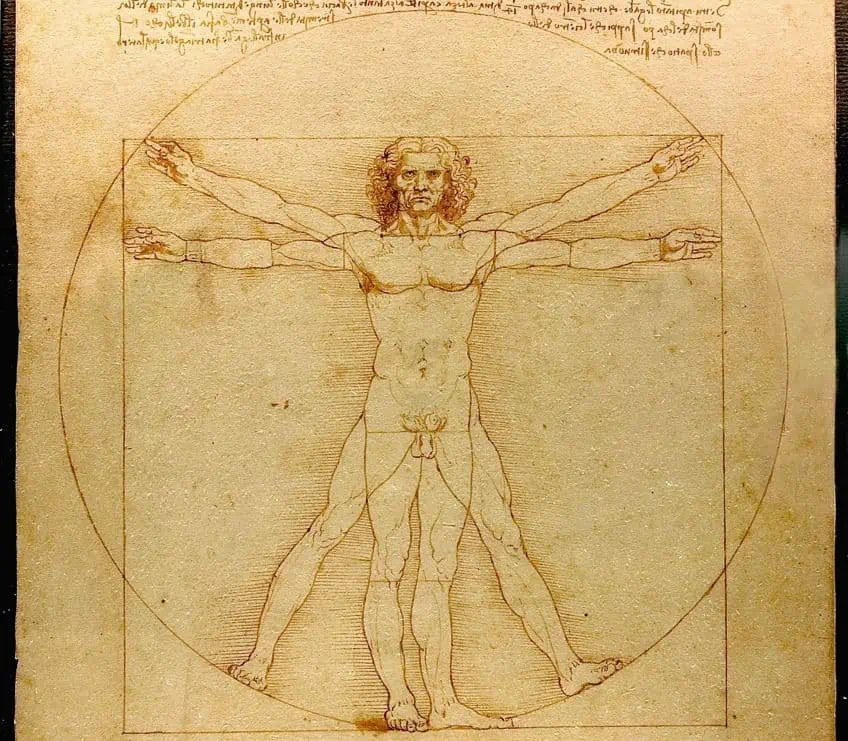 Vitruvian Man (1492) by Leonardo da Vinci; Leonardo da Vinci, Public domain, via Wikimedia Commons
Vitruvian Man (1492) by Leonardo da Vinci; Leonardo da Vinci, Public domain, via Wikimedia Commons
Michelangelo
| Date of Birth | 6 March 1475 |
| Date of Death | 18 February 1564 |
| Nationality | Italian |
| Associated Movements | Renaissance |
Many people consider Michelangelo to be the greatest artist in history due to his incredible skills in various art forms such as painting, sculpture, and architecture however the foundation of his artistic process was actually drawing. Michelangelo was known for creating numerous sketches of the human form before beginning a painting or sculpture. These drawings, which showcase his in-depth knowledge of anatomy and the human body, give us a glimpse into his creative process and the way he approached his elaborate compositions.
Michelangelo’s drawings demonstrate his extraordinary talent and ability which allowed him to master a wide range of artistic disciplines.
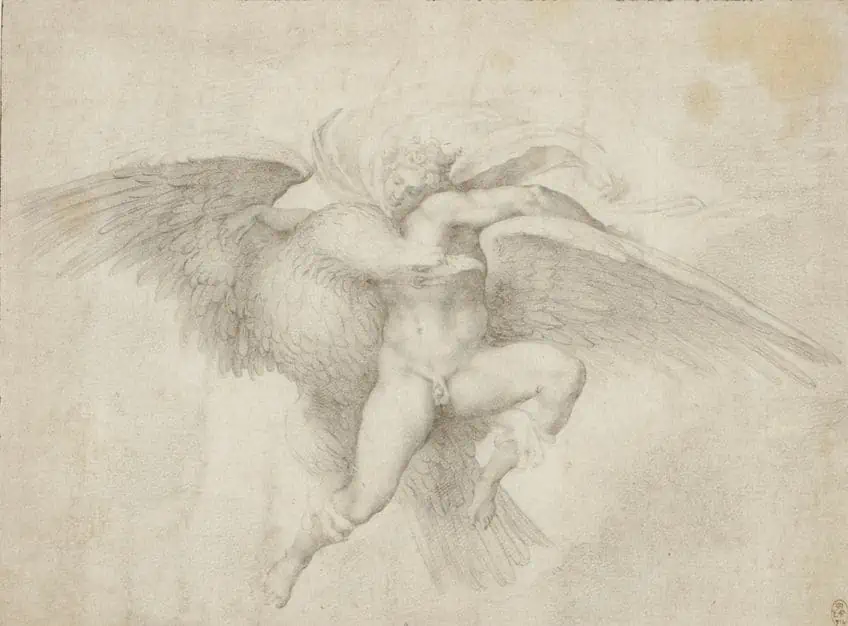 Ganymede (1532) by Michelangelo; Giulio Clovio, Public domain, via Wikimedia Commons
Ganymede (1532) by Michelangelo; Giulio Clovio, Public domain, via Wikimedia Commons
Jean-Auguste-Dominique Ingres
| Date of Birth | 29 August 1780 |
| Date of Death | 14 January 1867 |
| Nationality | French |
| Associated Movements | Neoclassicism, and Orientalism |
Jean-Auguste-Dominique Ingres was a Neoclassical artist renowned for his grand, traditional paintings. While his oil paintings were sometimes criticized by contemporary art critics for their gothic qualities, his numerous drawings and graphite portraits were highly praised for their meticulous attention to detail and ability to accurately capture a subject’s physical features and character.
Ingres’ work, particularly his drawings, showcased his expertise in traditional techniques and his talent for creating lifelike and expressive portraits.
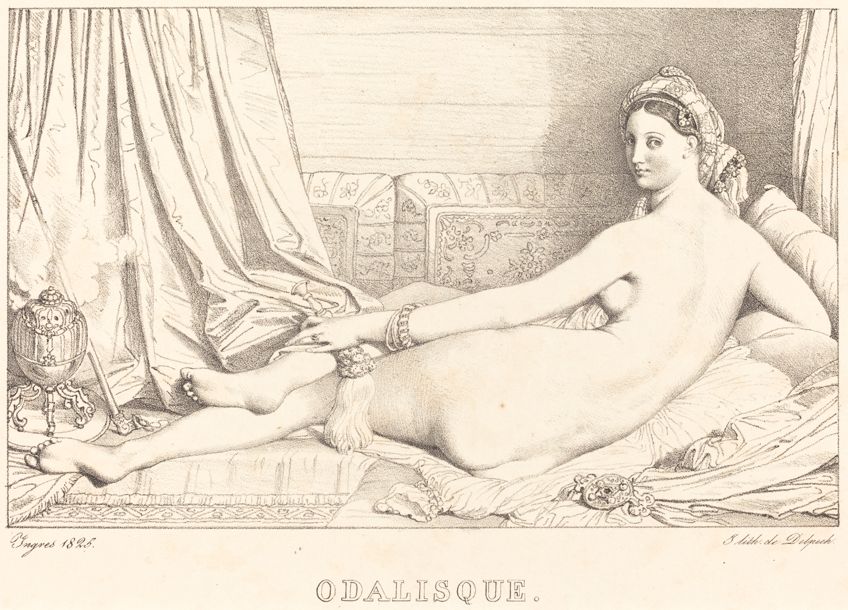 Odalisque (1825) by Jean-Auguste-Dominique Ingres; National Gallery of Art, CC0, via Wikimedia Commons
Odalisque (1825) by Jean-Auguste-Dominique Ingres; National Gallery of Art, CC0, via Wikimedia Commons
Gustav Klimt
| Date of Birth | 14 July 1862 |
| Date of Death | 6 February 1918 |
| Nationality | Austrian |
| Associated Movements | Art Nouveau, Modern Art, Symbolism, and Vienna Secession |
While Gustav Klimt is well known for his paintings that feature sparkling gold accents, he was also highly skilled at drawing and often incorporated bold lines into his compositions. Klimt was particularly adept at rendering the female form and used techniques such as foreshortening and perspective to create striking and dynamic images.
His talents as a draftsman played a crucial role in his art and had clear contributions to his unique and recognizable style.
 Reclining nude lying on her stomach and facing right (1910) by Gustav Klimt; Gustav Klimt, Public domain, via Wikimedia Commons
Reclining nude lying on her stomach and facing right (1910) by Gustav Klimt; Gustav Klimt, Public domain, via Wikimedia Commons
In conclusion, artist pencils are a versatile and essential tool for artists of all levels. Whether you are a beginner or a professional, pencils offer a range of possibilities for drawing, sketching, and creating. With the variety of pencil lead types and HB grading scales available, there is a pencil for every project and preference. Remember to choose a pencil that best suits your needs, and don’t be afraid to experiment with different types and grades to find your perfect match!
Frequently Asked Questions
Are Pencils Beginner Friendly?
Pencils can be a great tool for beginner artists, as they are relatively inexpensive, easy to use, and versatile. They are ideal for practicing and experimenting with different techniques or styles. There are also several types of pencils available, including graphite pencils, charcoal pencils, and colored pencils, which can be used for a variety of different purposes. Overall, pencils are a great choice for beginner artists because they are accessible, easy to use, and can be used to create a wide range of effects.
Are Pencils Safe for Children to Use?
Pencils are generally considered safe for children to use. While it is possible to ingest small pieces of lead, the amount of lead in a pencil is not enough to cause any harm. It is important to supervise children while they are using pencils to ensure that they are using them safely. Remember to store pencils out of their reach.
What’s in a Pencil?
A pencil consists of a lead core encased in a wooden casing. The lead is made from a mixture of clay and graphite, charcoal, or colored pigments, and the casing is typically made from wood such as cedar or basswood. Pencils may also have printing on them, an eraser attached to the end, a ferrule to hold the eraser in place, and a cap to protect the eraser. The HB grading scale is often printed on the pencil to indicate the hardness or softness of the lead.
What Does HB Mean on a Pencil?
HB is a grading scale used to indicate the hardness or softness of a pencil’s lead. The letters H and B stand for hard and black, respectively. The scale ranges from the hardest and lightest (9H) to the softest and darkest (9B). Pencils with a higher H rating have a harder lead and are lighter in color, while pencils with a lower B rating have a softer lead and are darker in color. The HB grading is often printed on the pencil itself, along with the pencil’s brand name and model number.
What Types of Pencil Lead Are There?
There are several types of pencil lead available, such as graphite, colored, watercolor, or charcoal lead. Each type of pencil lead has its unique properties and can be used for different purposes, such as creating subtle shading or bold, vibrant lines.
What Are the Best Sketching Pencils Types?
While it comes down to personal preference, many artists find that a softer lead pencil, such as a 2B or 4B, is best for sketching. These pencils have a darker, softer lead that is ideal for creating bold, expressive lines and adding shading to a drawing. Pencils with a harder lead, such as a 2H or 4H, are generally lighter in color and are better suited for detailed, precise work. However, they may not be as well-suited if you want to create loose, expressive sketches. Ultimately, the best pencil for sketching is one that feels comfortable and allows you to achieve the desired results. It may be helpful to try out a few different pencils to see which one works best for you.
What Types of Drawing Pencils Are There?
The best pencils for drawing depend on the artist’s personal preference and the intended use of the drawing. Graphite pencils are the most common type of pencil used for drawing, but charcoal pencils, pastel pencils, colored pencils, and watercolor pencils are also popular choices for drawing and can be used to achieve different effects.
Matthew Matthysen is a multidisciplinary artist. He completed his fine art degree, majoring in History of Art and Contemporary Drawing Practice at the University of Witwatersrand, South Africa. Before joining acrylgiessen In 2020, Matthew worked part-time as an art teacher at Reddford Blue Hills High school. Matthew creates drawing and painting tutorials for acrylgiessen and captures them not only photographically and in written form. He also records the creation of his works in his own creative studio as in video format, from which later with a voiceover and a video editor also drawing tutorials for the Youtube channel of acrylgiessen are created.
Learn more about Matthew Matthysen and about acrylgiessen.


